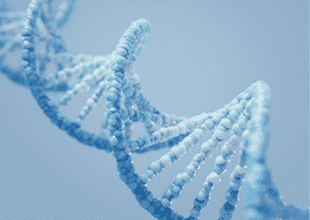DNA Extraction / Purification Reagents
Molecular biological techniques have played a major role in the development of the fields of life science, and DNA-related experiments are central to this development. Efficient purification of nucleic acids is an important factor influencing the results of molecular biology experiments.
Fujifilm Wako provides DNA extraction and purification reagents suitable for applications such as purification of the yield from various samples such as animals, plants, or microorganisms.
Product Line-up
More Information
Basic Procedures for DNA Extraction and Purification, and Their Principles

DNA extraction and purification are the first steps in genetic engineering and genetic analysis, and obtaining high-purity DNA in as high yield as possible leads to the success of subsequent experiments.
At present, there are many methods for DNA extraction and purification corresponding to various organisms and samples. DNA extraction and purification are basically performed by the following three processes:
▼Cell Lysis
The first step in DNA extraction and purification is cell lysis. Cell membranes are dissolved by treatment with chemicals such as surfactants, denaturants, and strong alkalis, or by treatment with heat. As for plants and bacteria with cell walls, the cell walls must be degraded with enzymes or be physically destroyed with glass beads.
▼Impurity Removal
In addition to DNA, various impurities such as proteins and RNA exist in cells. Proteins are denatured with denaturants or degraded with proteinases. RNA is degraded by RNA degradation enzymes (RNase). DNA and impurities (e.g., proteins) are separated by phenol extraction or phenol/chloroform extraction. DNA is transferred to an aqueous phase when phenol or phenol/chloroform is added under neutral conditions, and therefore DNA can be separated by collecting the aqueous phase only.
Commercially available DNA extraction kits, including the ISOSPIN series from NIPPON GENE, use the principle that DNA is adsorbed by silica membrane in the presence of chaotropic ions (e.g., guanidinium ion) (Boom Technology). When cell lysate to which binding buffer containing chaotropic ions is added is passed through a silica membrane that is placed in a spin column, DNA is adsorbed on the silica membrane, and other impurities are passed through the membrane, and thus, impurities can be removed efficiently.
▼Ethanol Washing and Dissolution/Elution
After impurity removal, salts and phenols remaining in the DNA solution must be removed. When ethanol and a salt (e.g., sodium salt, ammonium salt) are added to the DNA solution and the result is centrifuged, the DNA precipitates. This is because the negative charge of DNA is neutralized by the salt, and the highly hydrophilic DNA then easily aggregates in the presence of ethanol, which allows easy precipitation of DNA by the centrifugation (ethanol precipitation). After that, the ethanol is removed, the precipitated DNA is dissolved in water or TE buffer, and then high-purity DNA can be obtained.
As for the method using silica membrane, salts and the like can be removed by passing a wash buffer that contains ethanol as the main component through the membrane. At the last step, water or TE buffer is added to the silica membrane to release the DNA from the silica membrane, and then high-purity DNA is eluted.
References
Green, R. M. and Sambrook, J.: ”Molecular Cloning A Laboratory Manual, 4th ed.”, Cold Spring Harbor Laboratory Press, (2012).
For research use or further manufacturing use only. Not for use in diagnostic procedures.
Product content may differ from the actual image due to minor specification changes etc.
If the revision of product standards and packaging standards has been made, there is a case where the actual product specifications and images are different.
The prices are list prices in Japan.Please contact your local distributor for your retail price in your region.



